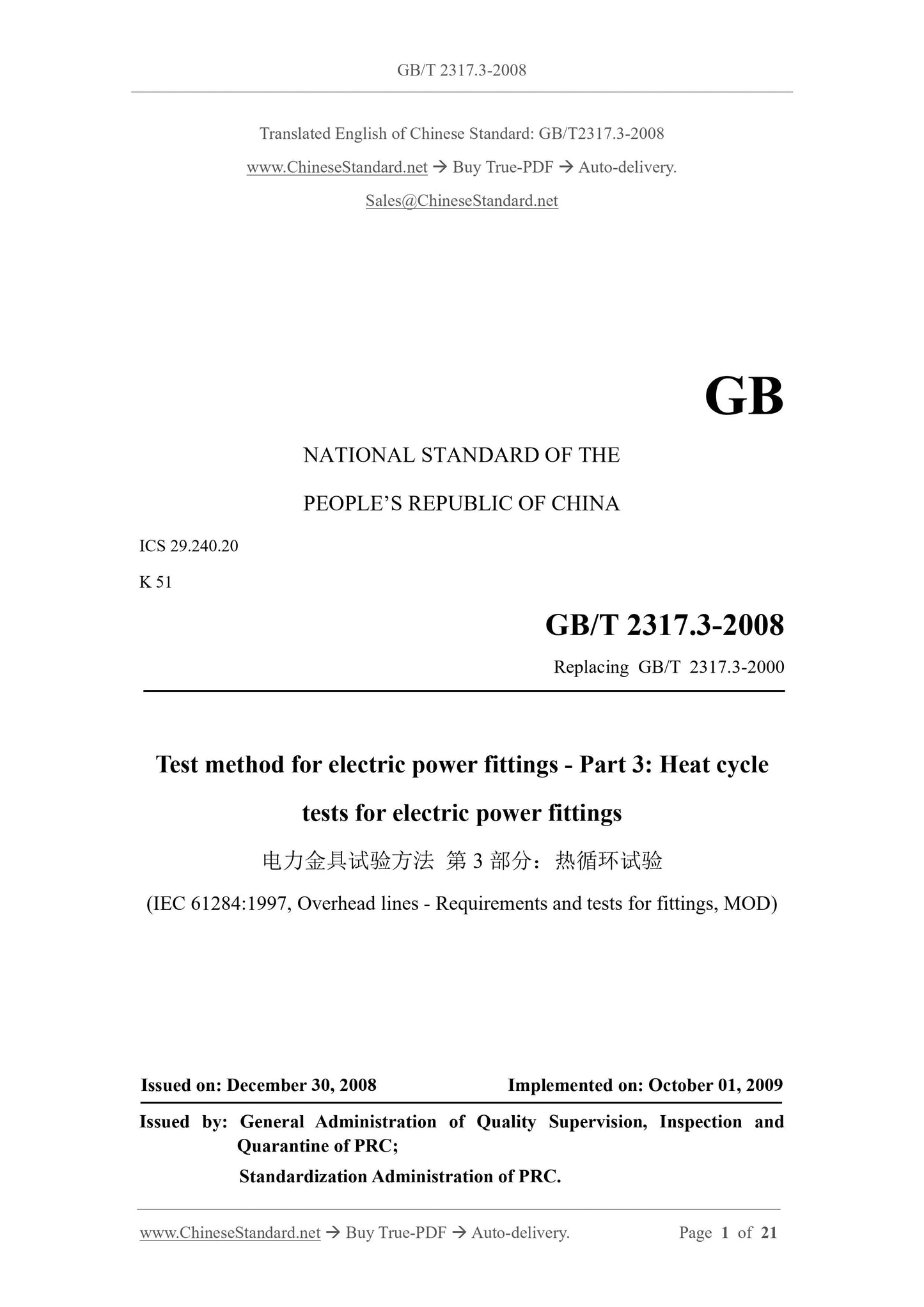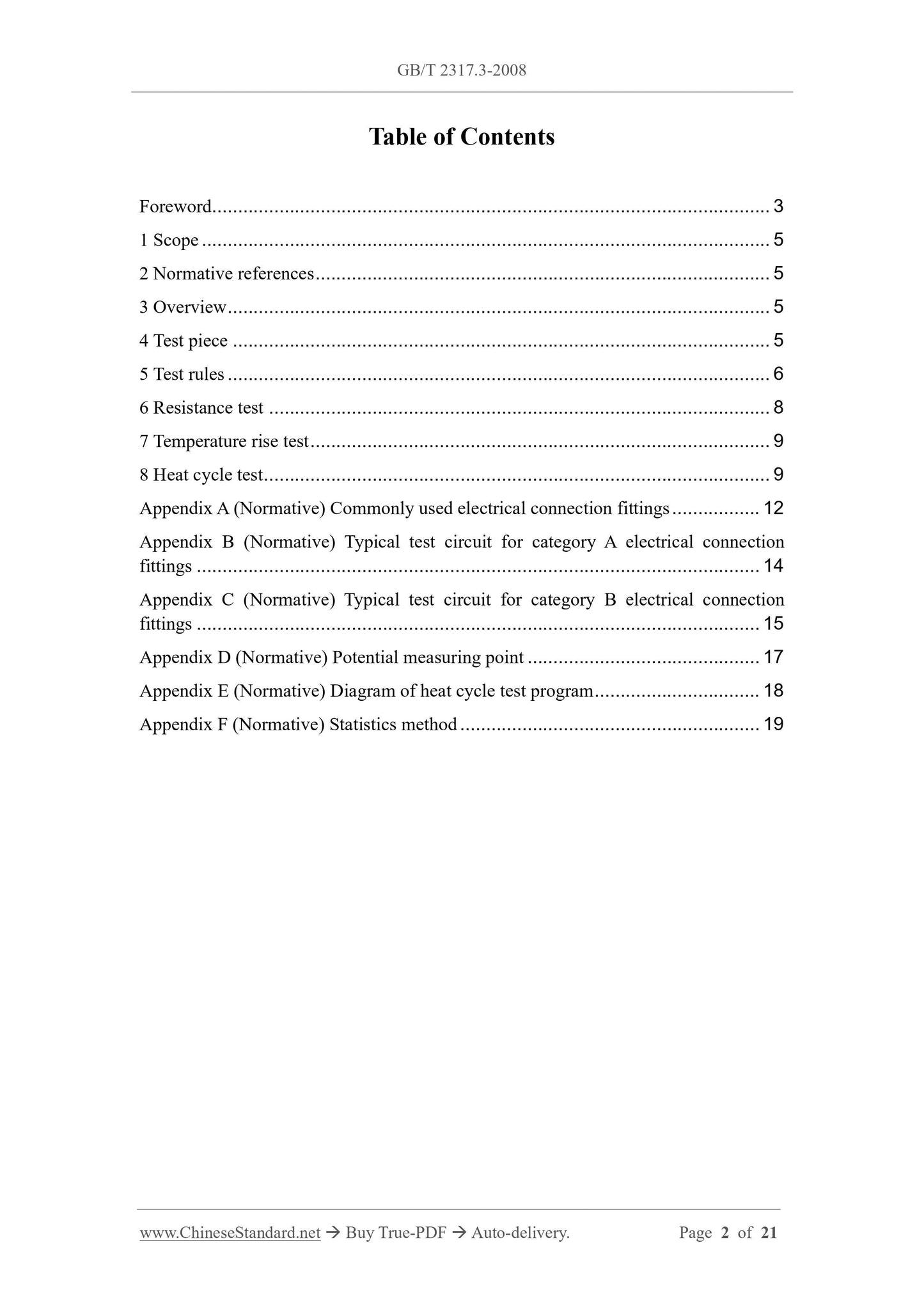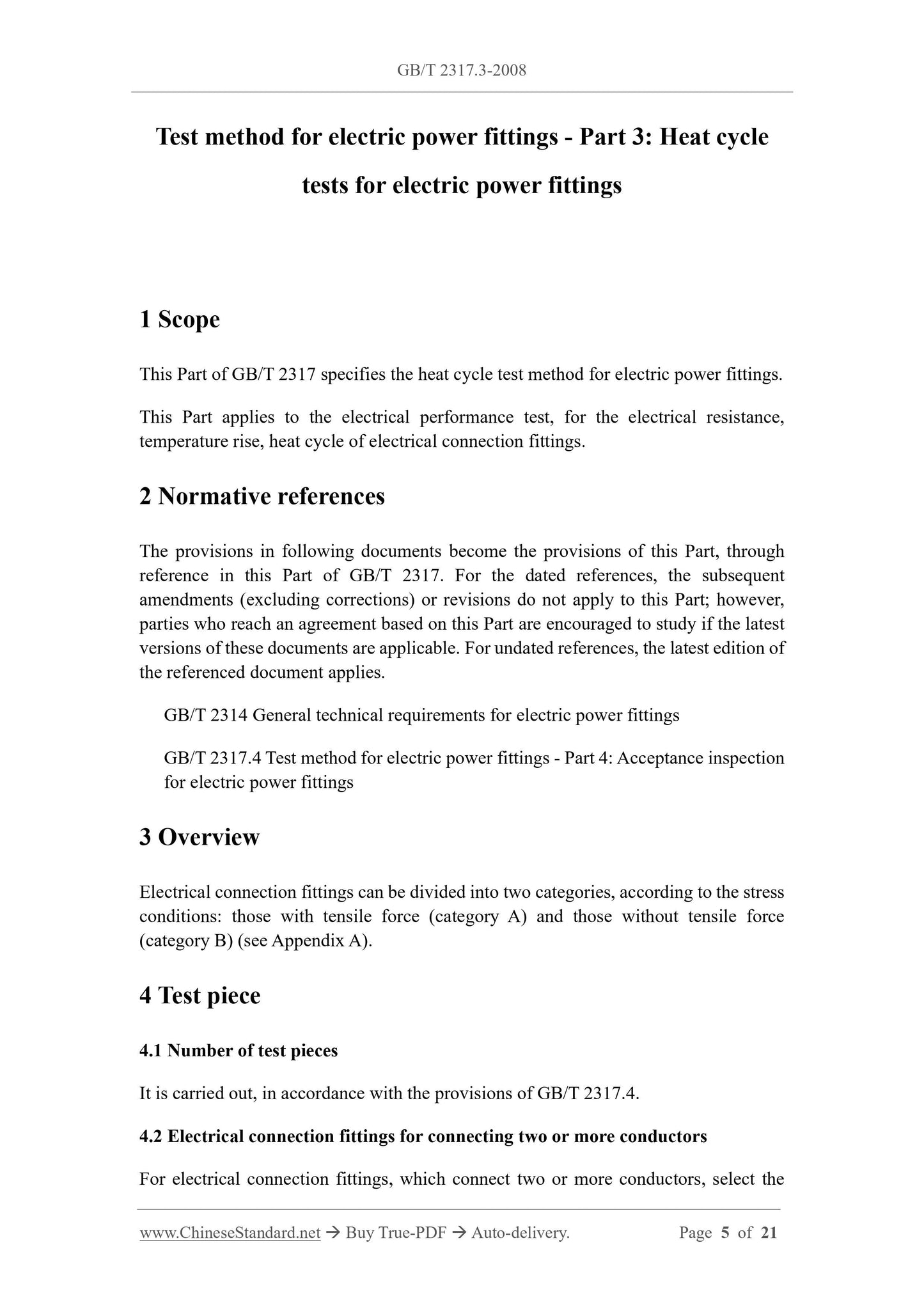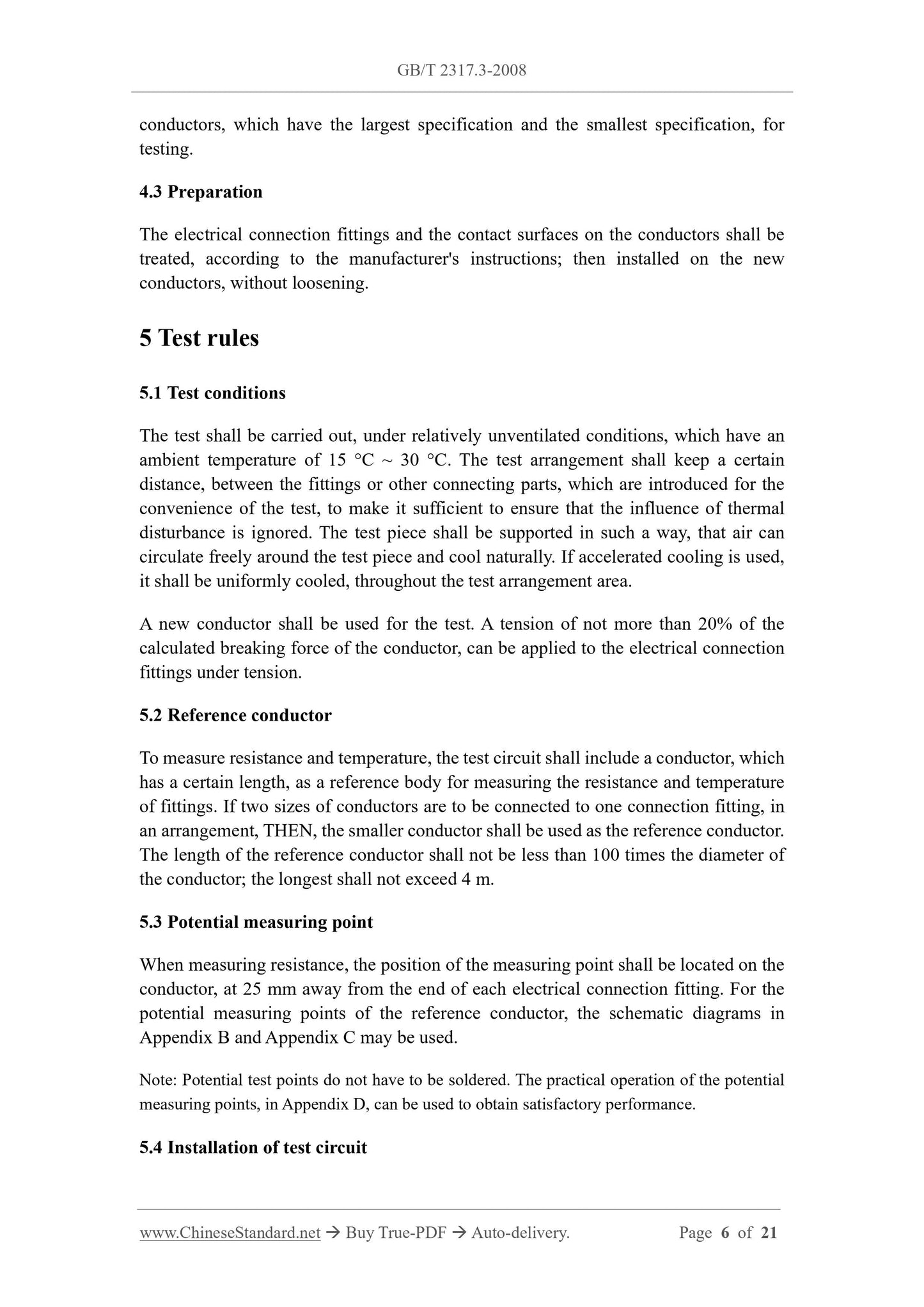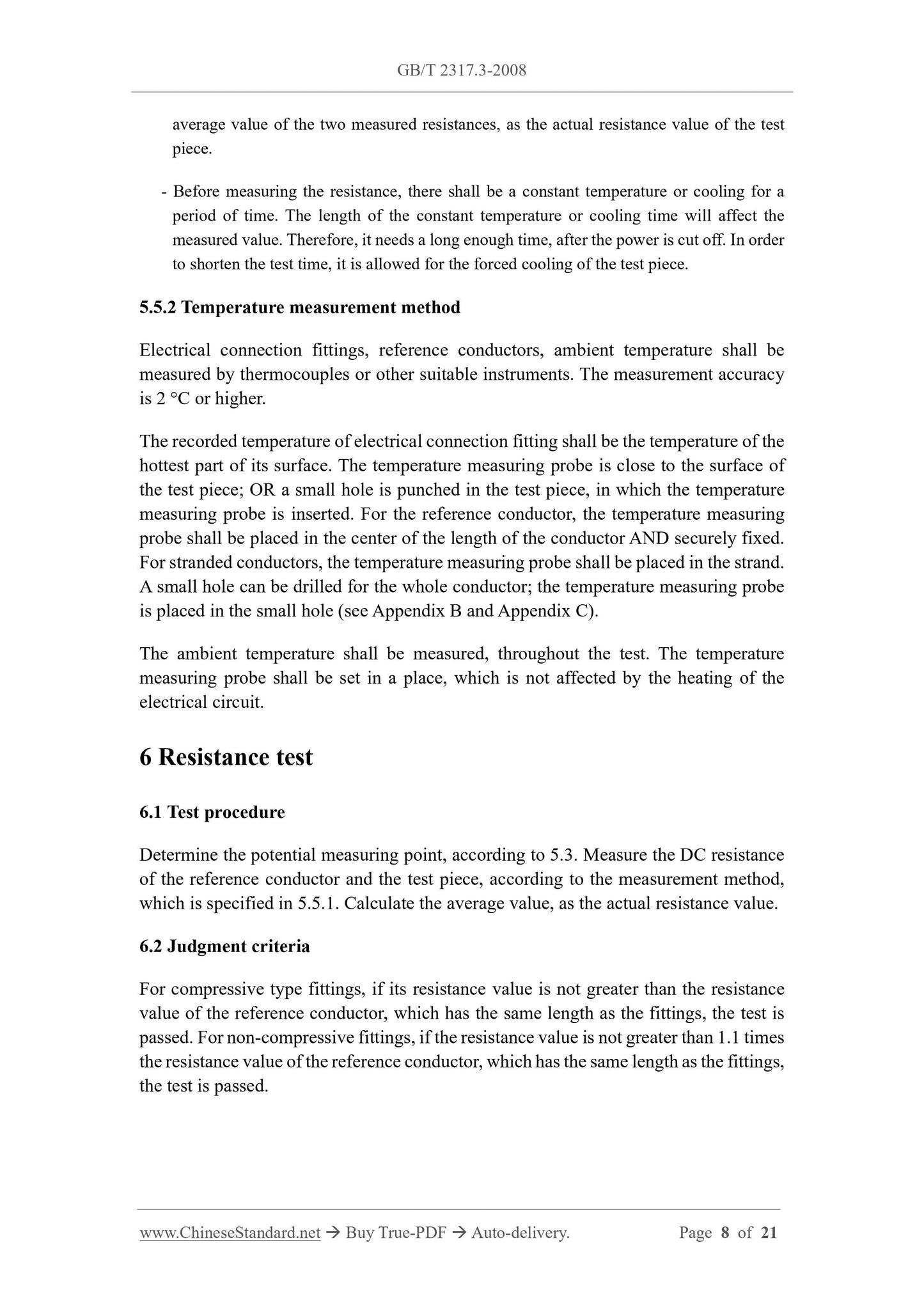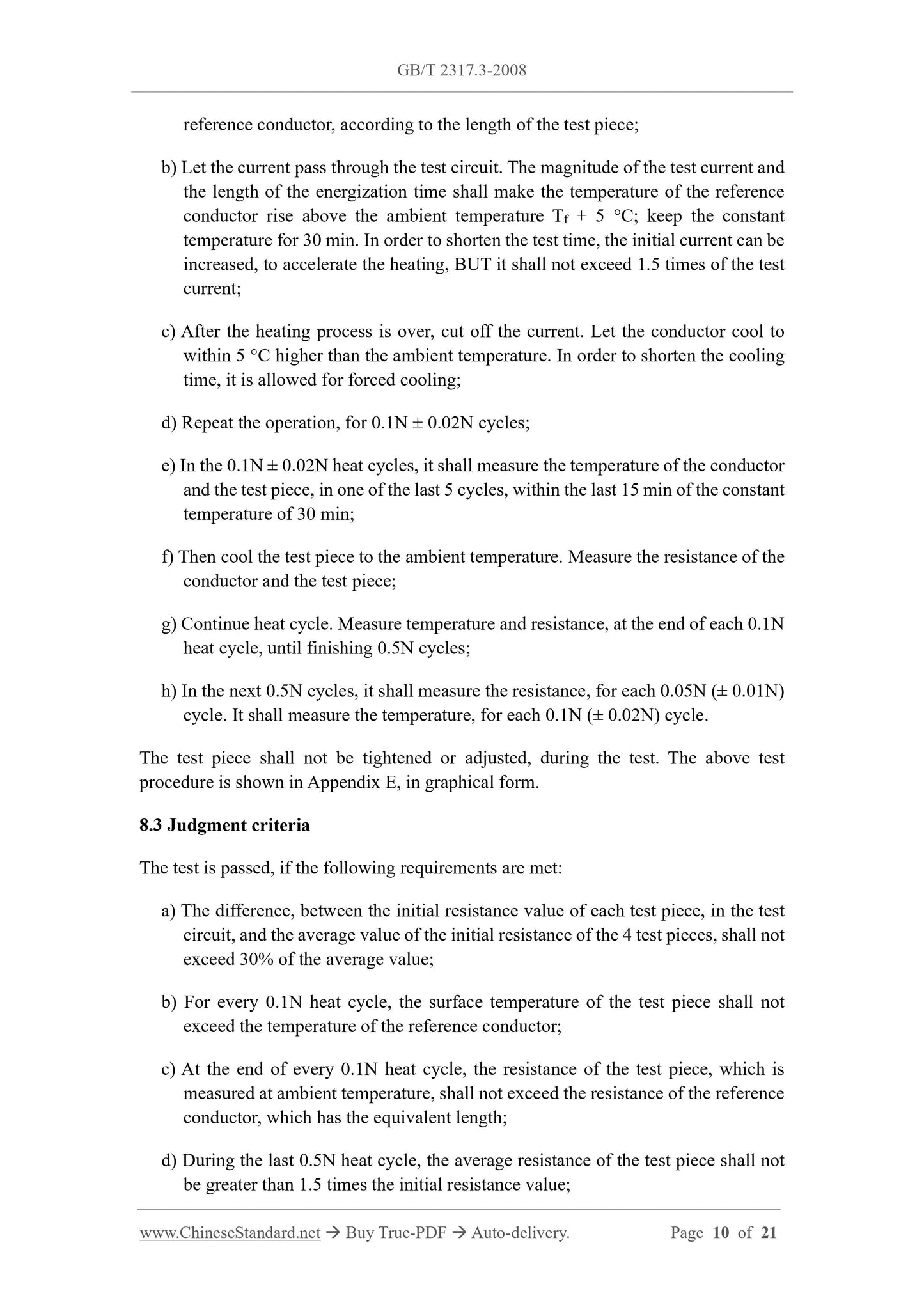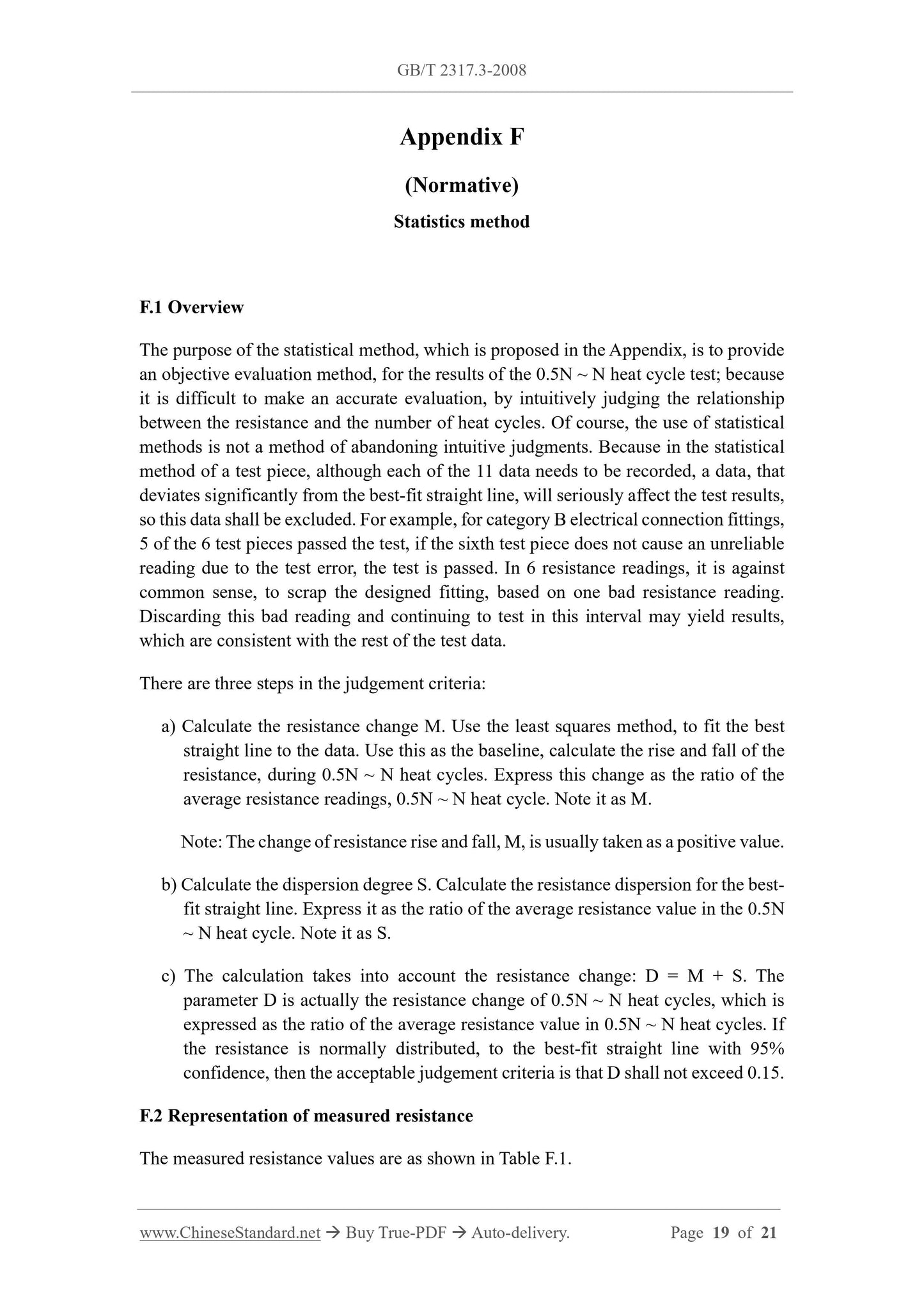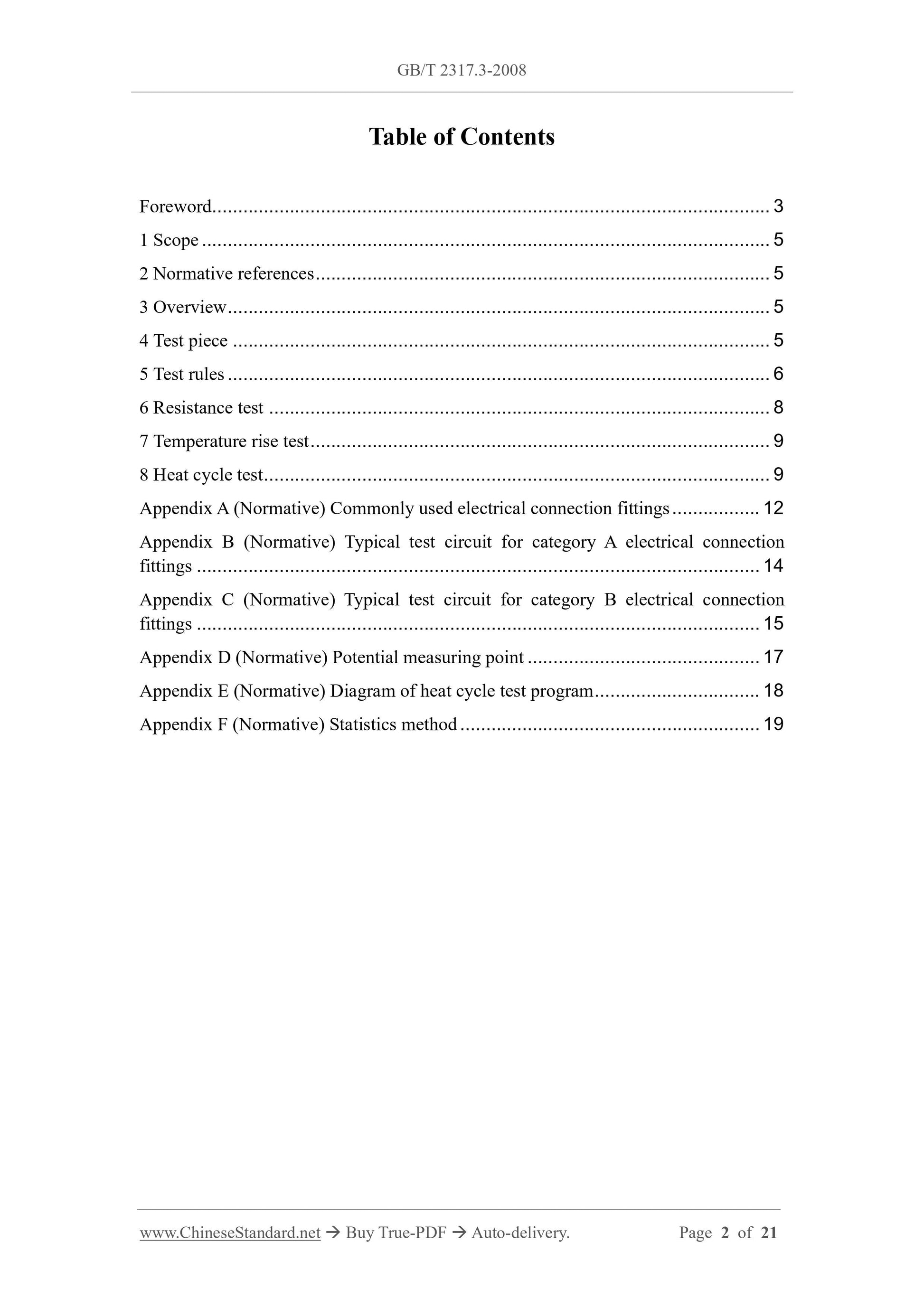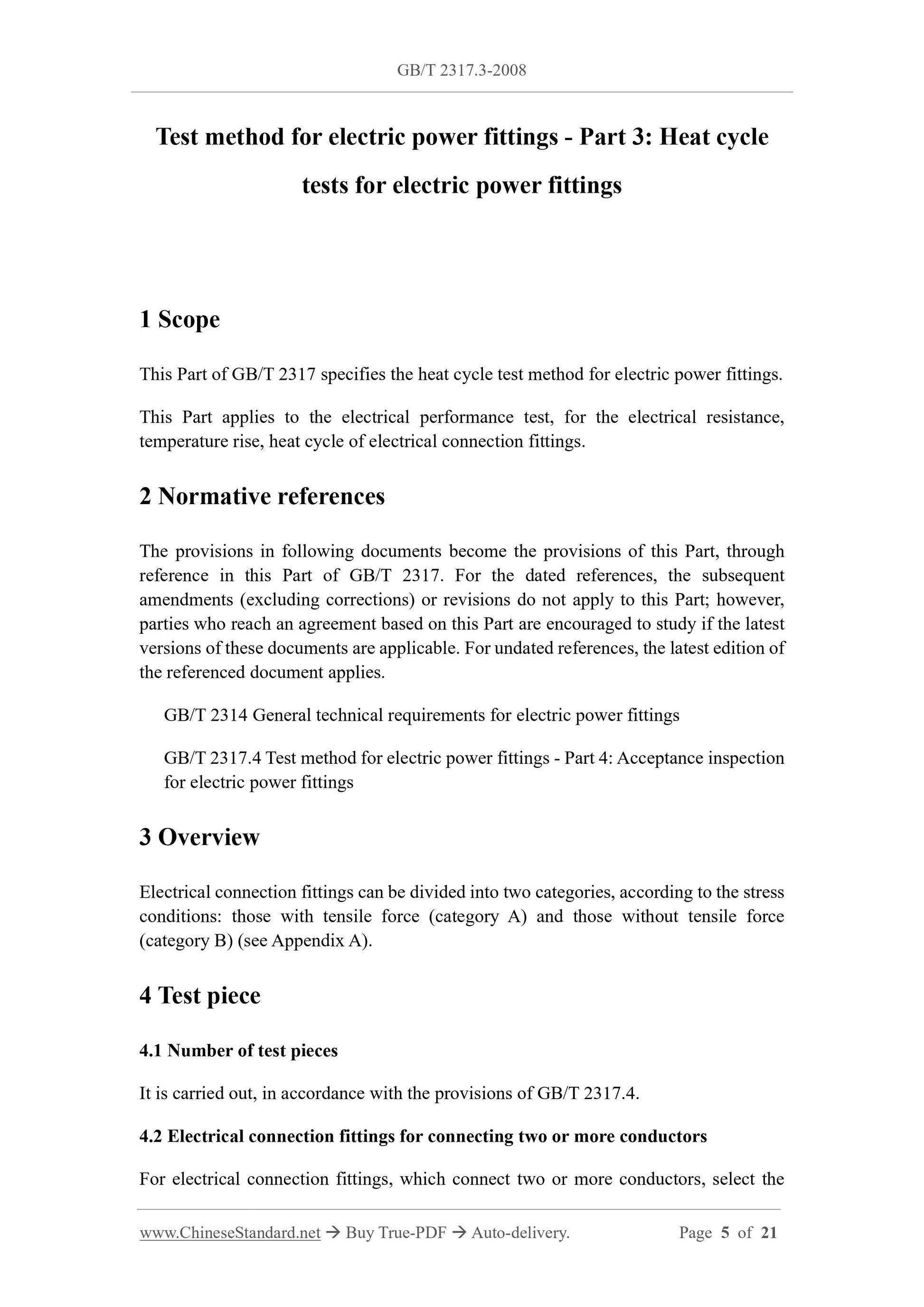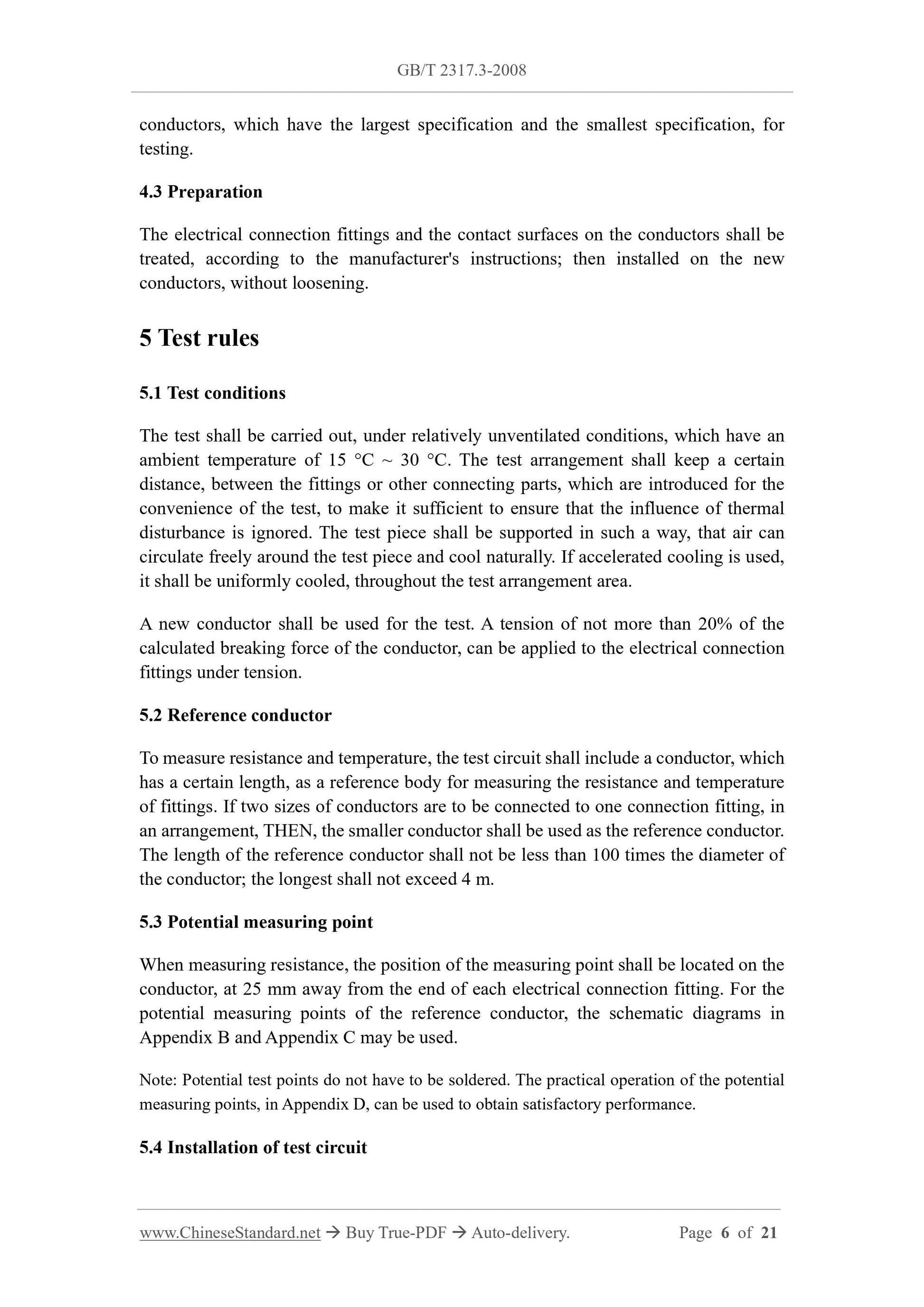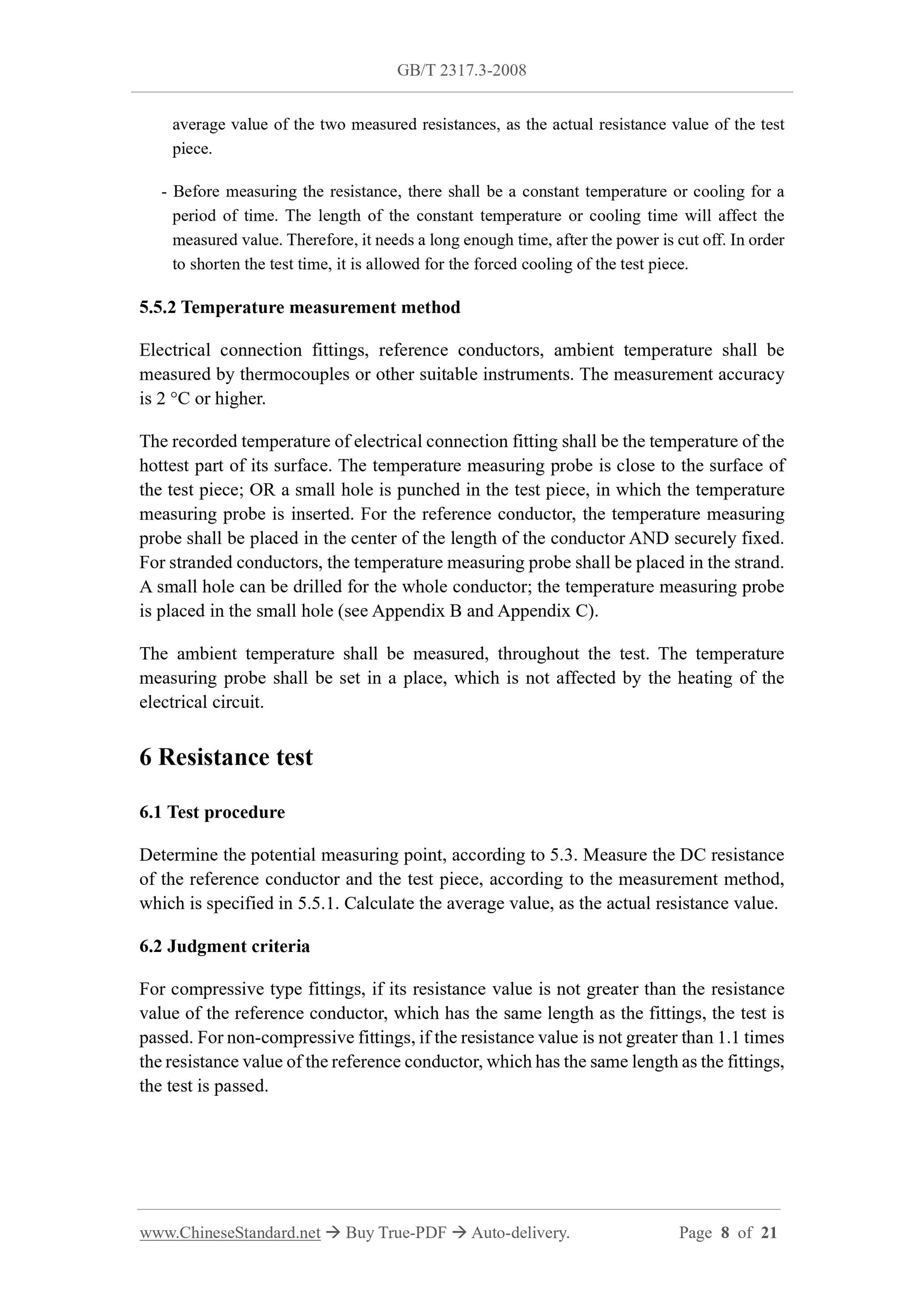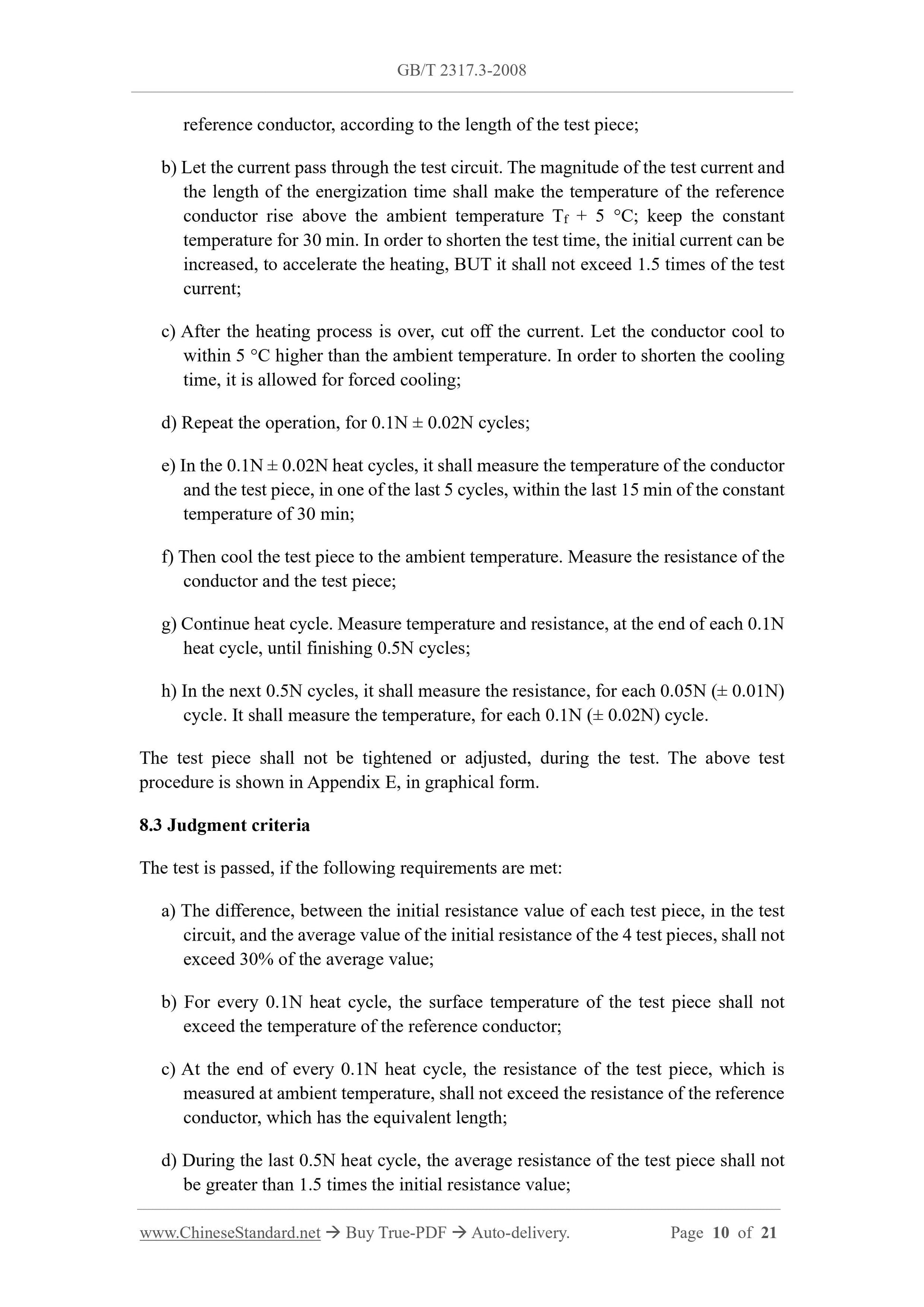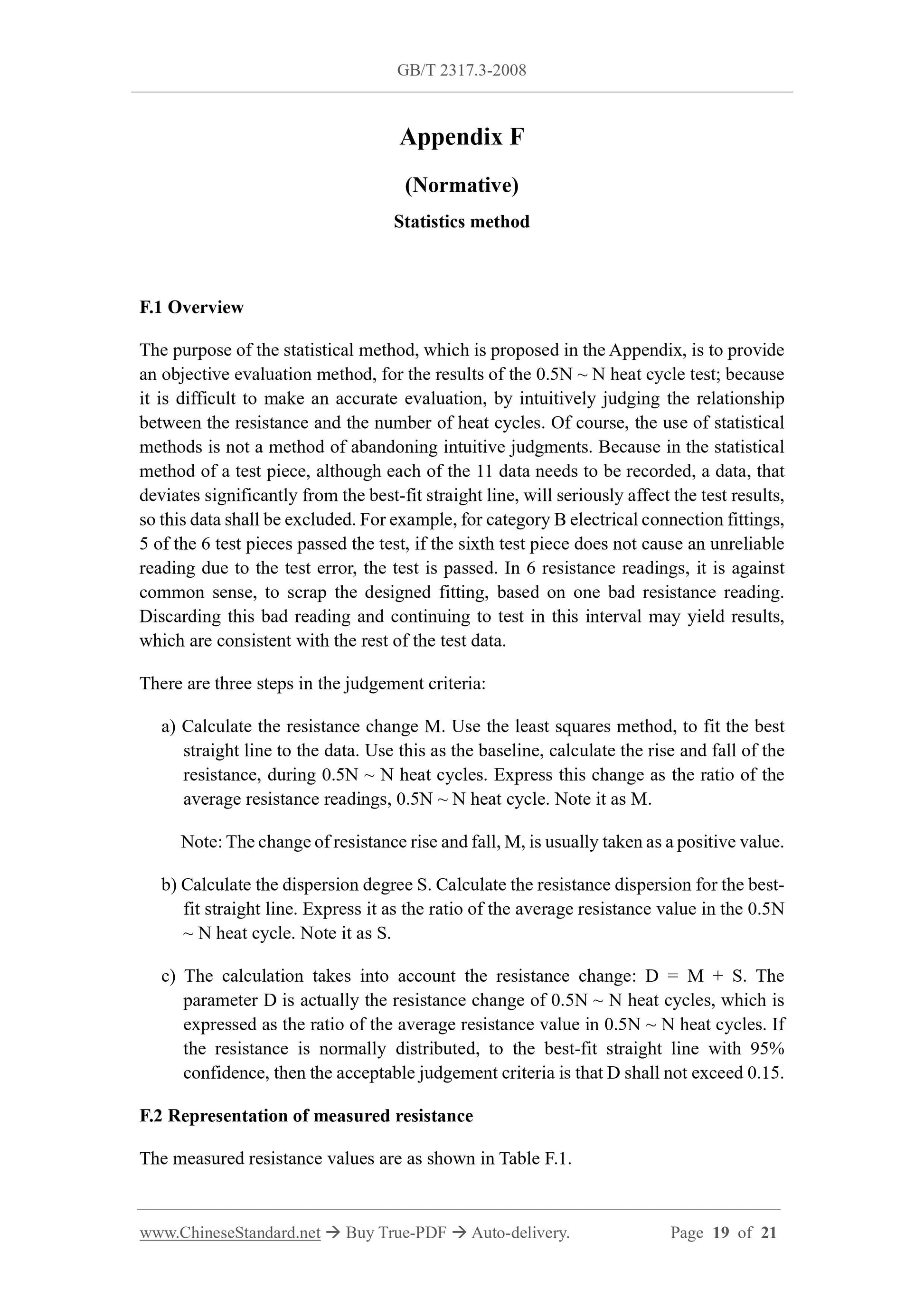1
/
of
7
www.ChineseStandard.us -- Field Test Asia Pte. Ltd.
GB/T 2317.3-2008 English PDF (GB/T2317.3-2008)
GB/T 2317.3-2008 English PDF (GB/T2317.3-2008)
Regular price
$220.00
Regular price
Sale price
$220.00
Unit price
/
per
Shipping calculated at checkout.
Couldn't load pickup availability
GB/T 2317.3-2008: Test method for electric power fittings -- Part 3: Heat cycle tests for electric power fittings
Delivery: 9 seconds. Download (and Email) true-PDF + Invoice.Get Quotation: Click GB/T 2317.3-2008 (Self-service in 1-minute)
Newer / historical versions: GB/T 2317.3-2008
Preview True-PDF
Scope
This Part of GB/T 2317 specifies the heat cycle test method for electric power fittings.This Part applies to the electrical performance test, for the electrical resistance,
temperature rise, heat cycle of electrical connection fittings.
Basic Data
| Standard ID | GB/T 2317.3-2008 (GB/T2317.3-2008) |
| Description (Translated English) | Test method for electric power fittings -- Part 3: Heat cycle tests for electric power fittings |
| Sector / Industry | National Standard (Recommended) |
| Classification of Chinese Standard | K51 |
| Classification of International Standard | 29.240.20 |
| Word Count Estimation | 14,126 |
| Date of Issue | 2008-12-30 |
| Date of Implementation | 2009-10-01 |
| Older Standard (superseded by this standard) | GB/T 2317.3-2000 |
| Quoted Standard | GB/T 2314; GB/T 2317.4 |
| Adopted Standard | IEC 61284-1997, MOD |
| Regulation (derived from) | Announcement of Newly Approved National Standards No. 23 of 2008 (No. 136 overall) |
| Issuing agency(ies) | General Administration of Quality Supervision, Inspection and Quarantine of the People's Republic of China, Standardization Administration of the People's Republic of China |
| Summary | This standard specifies the electrical fittings thermal cycle test methods. This section connecting fittings for electrical resistance, temperature and electrical properties of the thermal cycling test. |
Share
